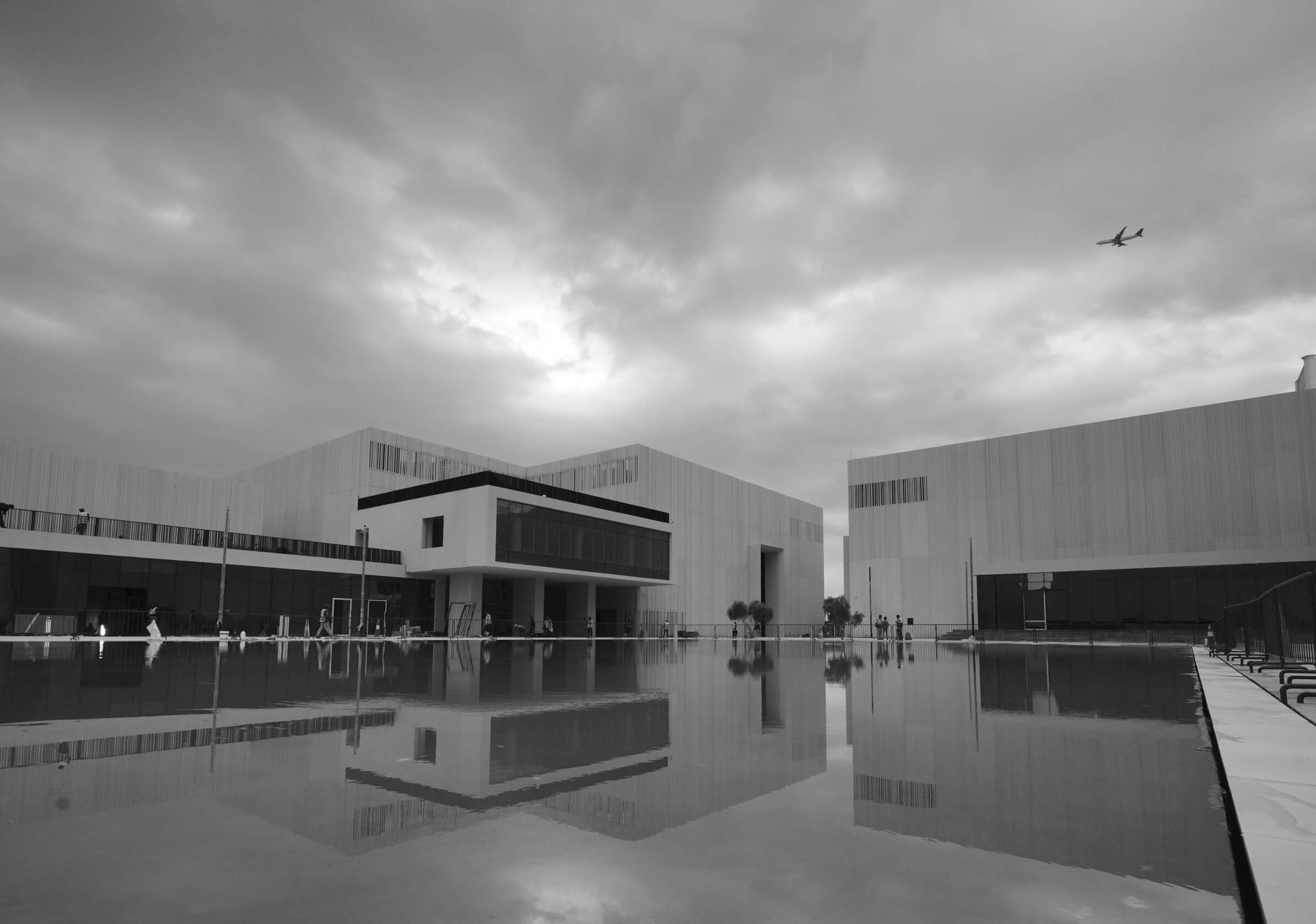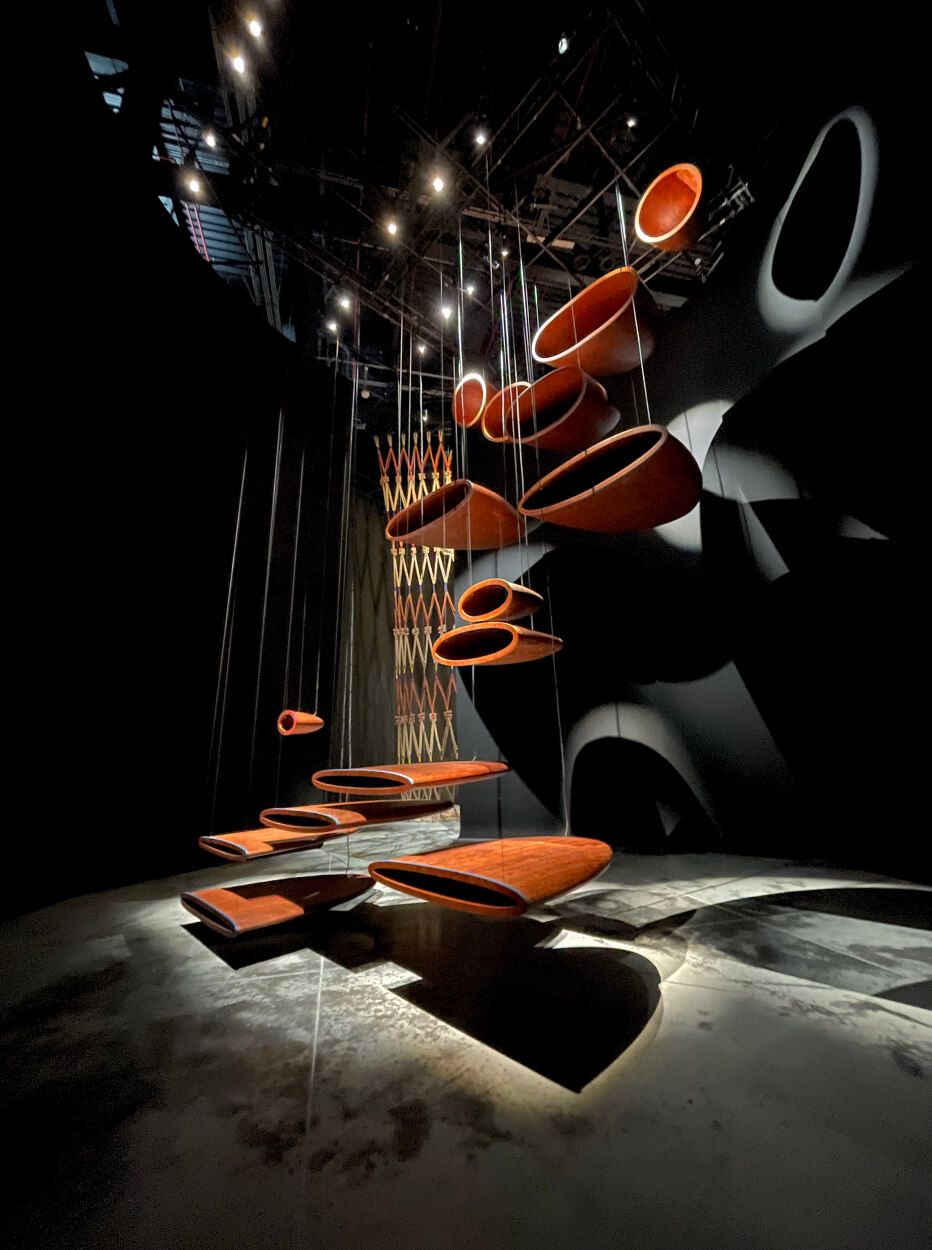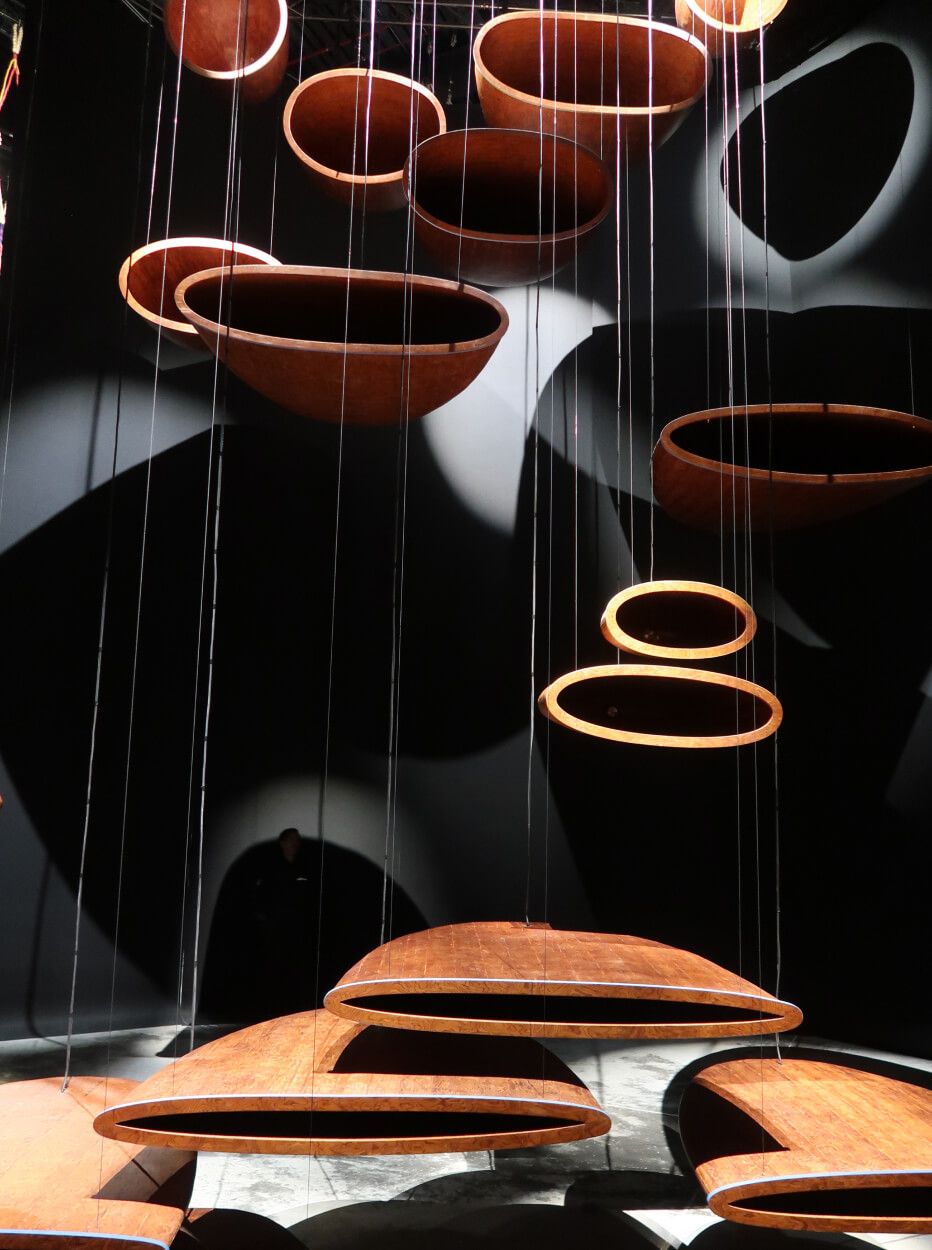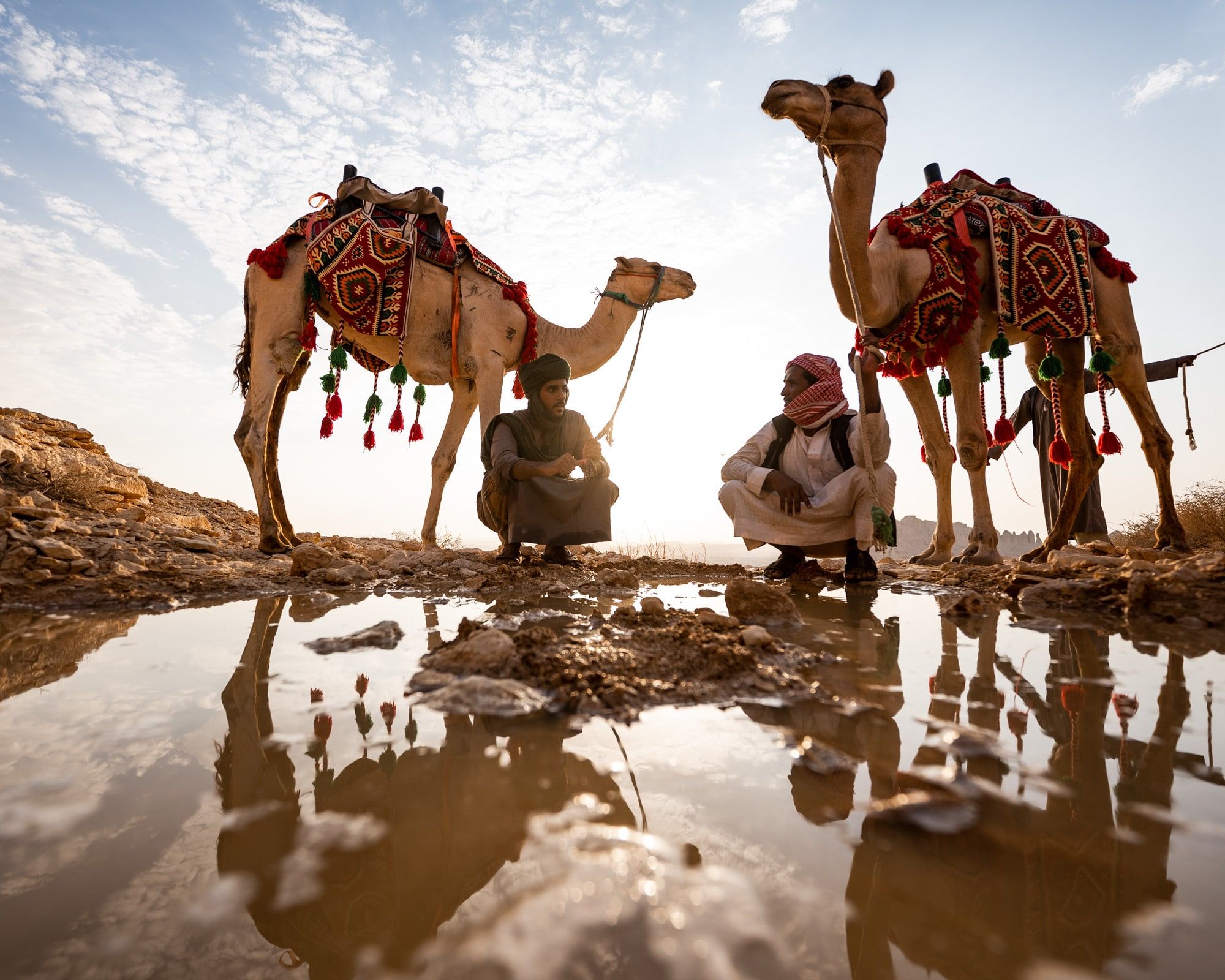The Sound of Islamic Art
The Kaabah door was made by Shaikh Mahmoud Yousuf Badr for King Abdulaziz bin Abdulrahman Al Saud. Credit: The Diriyah Biennale Foundation’s Islamic Arts Biennale in Jeddah.
What does Islamic art sound like? What does the call to prayer ‘adhan’ look like? When talking about the art of sound, one naturally thinks of music, but it is important to distinguish that not all musicality is music. A better term is "the art of sound" or "handasat al sawt," (the composition of sound) for religious and non-religious compositions that are melodious and pleasant sounding, but not music as such.
The notion that the art of sound has the power to touch a listener’s heart and enhance meaning, and that it is an essential part of spirituality, all point to the pivotal role and importance of vocals. The Muslim mystics recognized that the art of sound has mystical powers to draw out the deepest human emotions and can also influence a person’s will. A reciter skilled in correlating musical technique to their understanding of the text can even convey the meaning of the text more fully and can help someone who does not understand the language comprehend the words.
The Diriyah Biennale Foundation’s Islamic Arts Biennale in Jeddah is a place that brings together the multidimensional arts of Islam in one space, with five galleries showcasing a variety of contemporary and classical Islamic arts, along with a sprawling outdoor area.
As we enter the first gallery, we are met by silence. Then from out of the void, a composite sound emerges of multiple muezzins from distant minarets. I was instantly transported to a Muslim city where, at each of the prescribed five times of day, there is an explosion of adhan from different mosques across the urban landscape. A collection of 18 speakers brought me back to the gallery, except these recordings were from different cities, at different times in the past. So, effectively what I experienced was a global call to prayer in one enclosed space.

The Diriyah Biennale Foundation’s Islamic Arts Biennale in Jeddah, 2023, by Zahra Shikara.
In Cosmic Breath, Joe Namy has gathered recordings of the Muslim call to prayer from countries and ages around the world, to honor its transcendence. His work with sound typically focuses on memory and identity and here it represents the global Muslim community. Every recording is layered to create a blend of voices that echo and reverberate through the room. The tapestry of voices, crossing countries and languages, creates an impression of timelessness. The calls are ancient, modern and powerful, lulling the listener into a meditative serenity. The work reflects a deep understanding of the power of sound to evoke memories, invoke identity, and connect across space and time.
Although there is a sense of permanence inherent in the adhan, there are numerous variations. One of the calls is an early recording of the adhan from Makkah dating back to the 19th century and a recording from the Philippines. Contemporary contributions include the Aqsa Mosque in Jerusalem and the Sultan Mosque in Singapore, thought to be the first to use loudspeakers. We also hear calls to worship from Japan, Georgia, South Africa, the Sahara region of Morocco, Germany, and America—all bearing unique and distinct voices that evoke their specific geography and culture but reflect unity and harmony, blending together into an almost ethereal soundscape.

The Diriyah Biennale Foundation’s Islamic Arts Biennale in Jeddah, 2023, by Zahra Shikara.
Opposite is the work of Nora Alissa, Epiphamania: The First Light, which gives us a glimpse into Mecca and the worshippers around the Kaaba with discreet photographs she took through her clothing.
We pass the most exquisite astrolabe I’ve ever come across that dates back to the Safavid era. It serves as a reminder of the Muslims' ability to craft beauty from the mundane to the lavish. Even those elements that are out of sight were decorated and celebrated. In the same way, Allah is also unseen, but still beautiful.
We are then met with a gargantuan structure; a towering collection of forms suspended in space that resemble traditional drums or fishing traps used off the eastern coast of Saudi Arabia. Wave Catcher by Basma Falemban is inspired by the rhythms and structures of the sea and the patterns of Arabic poetic meters called bahr (meaning sea). The audio backdrop of waves is inspired by the adhan, and creates a soothing and calming atmosphere, like a gentle ocean lapping at its shore, or the gentle rhythms of adhan which can be heard echoing through the streets long after the prayer has ended. A reminder of the invisible waves that carry sound to our ears.
Usually, the call to prayer is chanted according to a certain melodic system, known as maqam, which dictates the pitch, phrasing, and sound of each line. The rhythm of the chant follows the bahr meter. The maqam system has variations depending on region, and the bahr is adjusted according to the time of day - a slower tempo is used at dawn, while a quicker beat is used at sunset. The maqam system provides a framework for the chant.
The Arabic word maqam means “position”, and the artist employs this concept in her work by placing her forms in space to give a physical shape to the call to prayer. She uses the method of visualization through forms that symbolize sounds, with their size, shape and position indicating both pitch and duration. Their materiality is represented by the teak wood used in fishing and trading boats in the Hijaz, a nod to past maritime connections.

Wave Catcher by Basma Falemban is inspired by the rhythms and structures of the sea and the patterns of Arabic poetic meters called bahr (meaning sea). Artworks exhibited at The Diriyah Biennale Foundation’s Islamic Arts Biennale in Jeddah. Photo by Manar Al-Mutairi.
One key feature of Islamic art, and Islamic sound arts in particular, is its abstract qualities. This stems from the principle of tawhid: that Allah is not part of His creation and cannot be represented in any way. Sound is less prone to representation than visual art, yet the abstract qualities of Islamic art are evident in the lack of interest shown in programmatic or descriptive music. Linked to this abstract quality is the technique of infinite patterning, where short patterns are repeated over and over, but with slight variations.
Islamic sound art forms tend to be modular: the idea of a composition in the Western sense is rare. Instead, pieces of sound art are constructed from varying and distinct modules, which are combined and rearranged and repeated, leading to another feature of Muslim musicality: improvisation. Adhan and Qur’anic recitation is improvised in the way the muezzin or qari (reciter) weaves the words into various melodic phrases. This is never pre-planned, with no set theory, and will differ from recitation to recitation. Thus, Islamic musicality has an informal and improvisational nature and tends to have a never-ending quality - a key concept in Islamic art.
In a creative fusion of audio and visual art, Fatiha Zemmouri, with curator and researcher Sukaina Abouitaoula, has interpreted the sound of a prayer recitation as a waveform and then converted this into a physical drawing tool. By repeatedly moving the tool, Zemmouri was able to shape a layer of earth from Tahannaout, where she lives and works, into broad abstract geometric patterns. The earth is used to cover a wooden frame, creating a part-sculpture, part-engraving artwork.
Her latest work featured in the Islamic Arts Biennale, Grammar of the Earth, builds upon her previous series, examining how spiritual concepts can be represented through physical mark-making - i.e. “the spiritual made tangible”. Working with natural elements, Zemmouri explores themes of transience and fate. Her visualization of what a prayer recitation looks like, in the form of geometric patterns made from the earth, has several layers of meaning in line with the infinite nature of Islamic art. It's built from a simple material: clay, the material of creation. She translates the audio and spiritual nature of prayer into a beautiful visual form, giving us a new dimension of art from other mediums.
Prayer recitation includes the adhan and Quran and is a regular ritual form of worship. Creating such aesthetics and meaning from the ordinary using the humblest of materials epitomizes the essence of Islamic art: there is sophistication in the mundane, there is elegance in simplicity, and beauty in the unseen.



